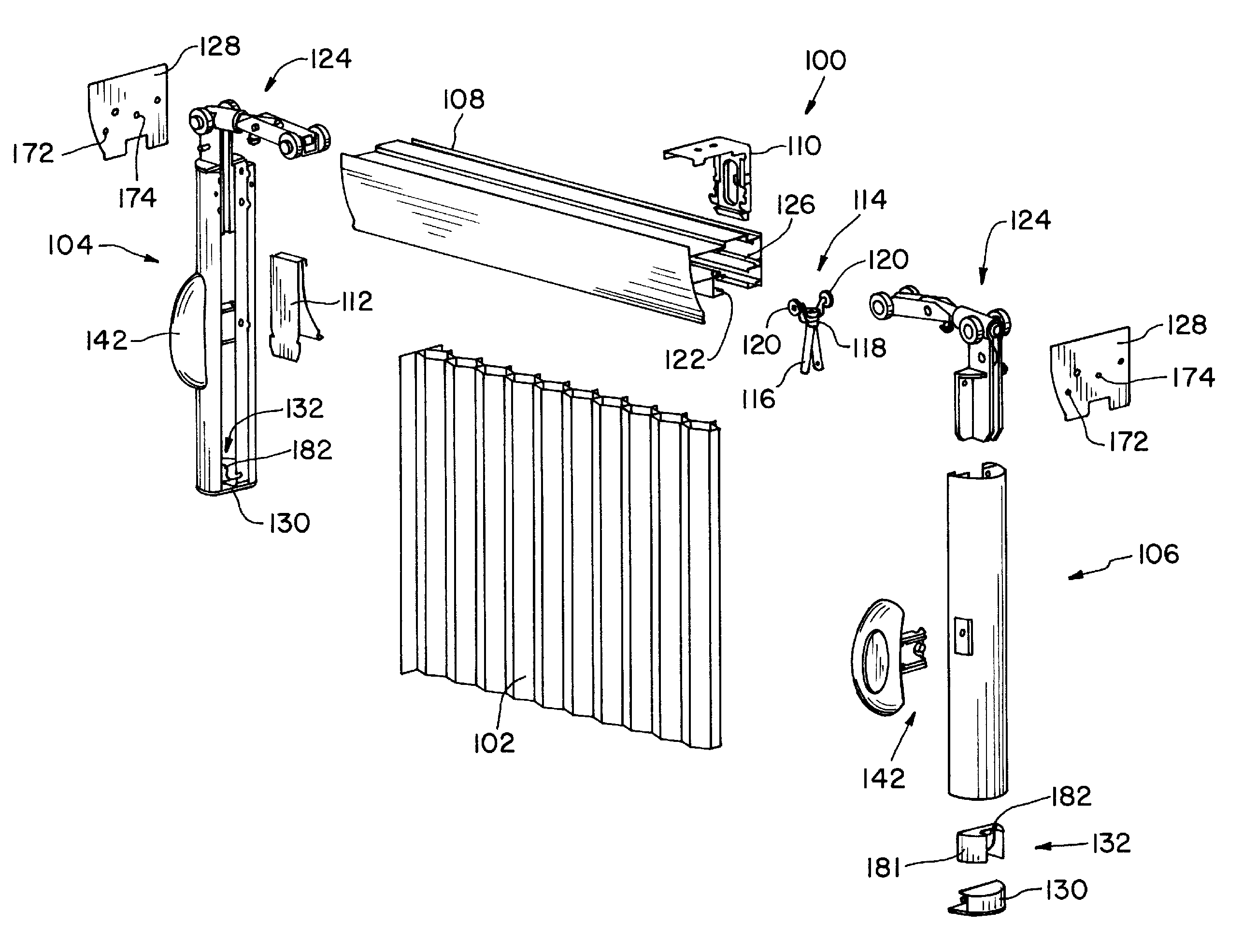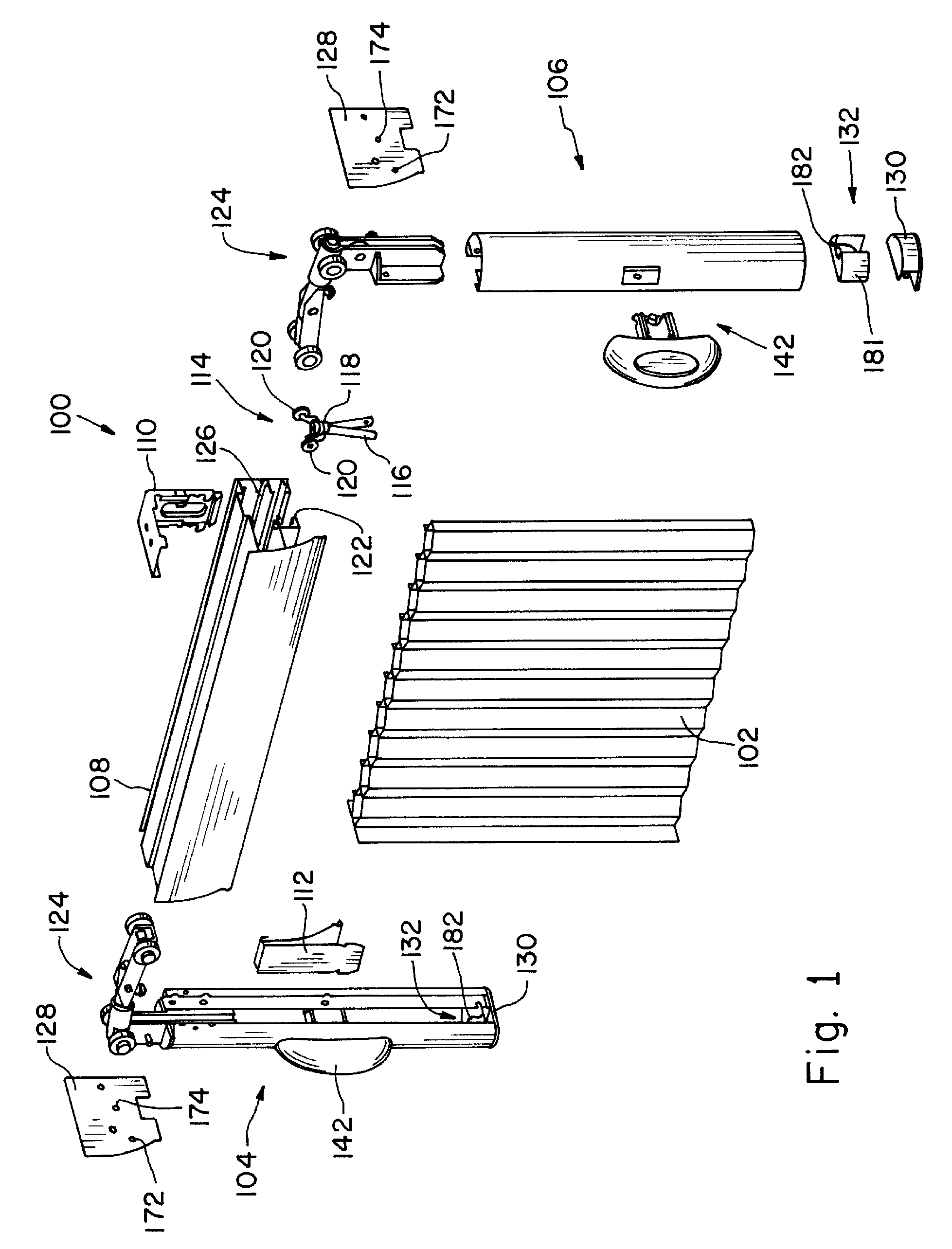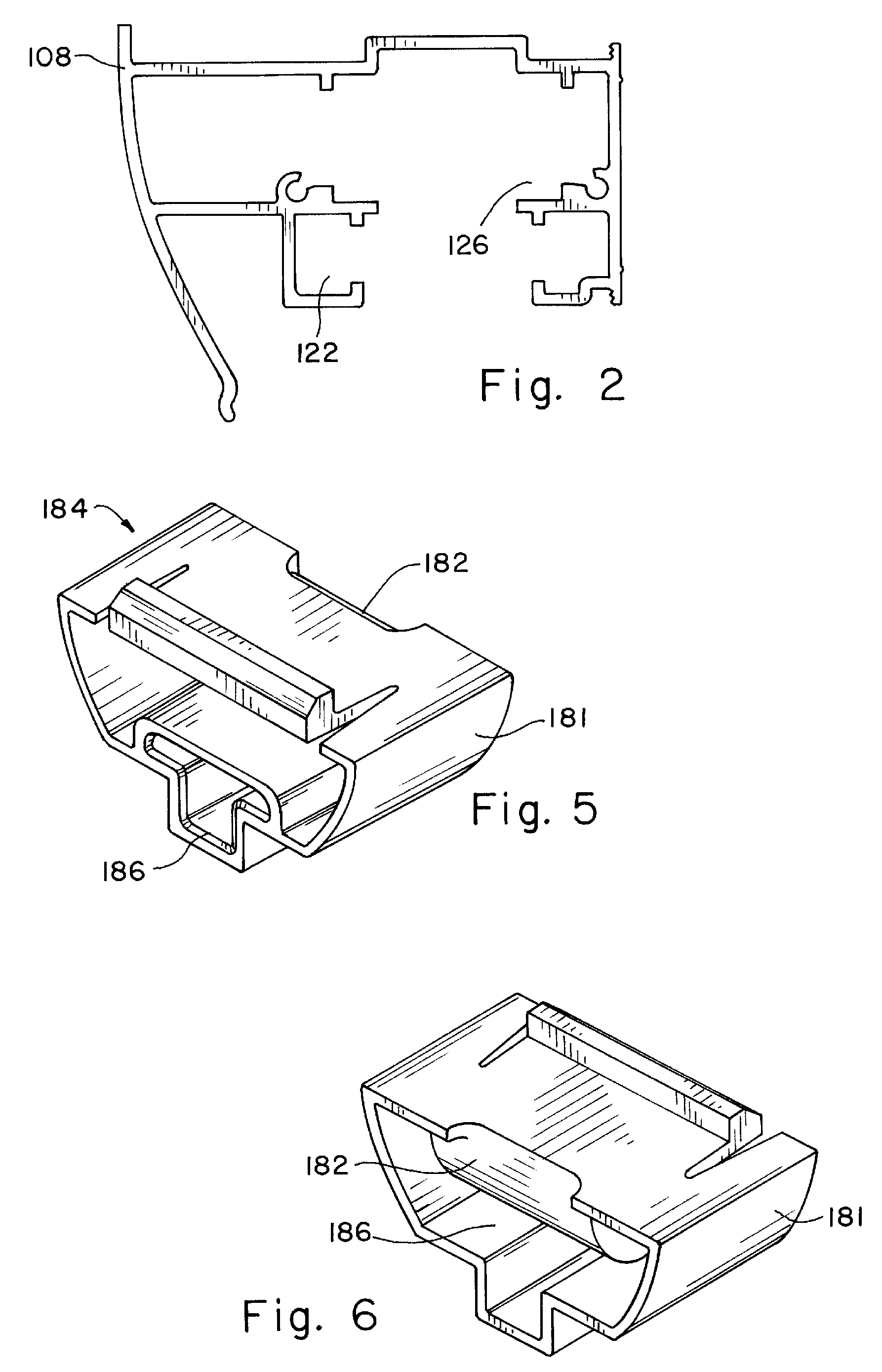Vertical cellular blind
a vertical cellular fabric and blind technology, applied in the direction of shutters/movable grilles, door/window protective devices, wing arrangements, etc., can solve the problems of difficult adjustment, creep, and difficulty in traversing the blind along the headrail between closed and opened positions, so as to minimize the effect of fabric damage, maximum exposure, and minimize creep
- Summary
- Abstract
- Description
- Claims
- Application Information
AI Technical Summary
Benefits of technology
Problems solved by technology
Method used
Image
Examples
Embodiment Construction
[0040]Referring now more specifically to the drawings and to FIG. 1 in particular, a blind 100 in accordance with the present invention is shown. A cellular fabric panel 102 is used in vertical orientation, that is, each of the cells of the panel is arranged vertically. The end cells of the panel are retained in vertical rails 104, 106. Various types of cellular fabrics are known to those skilled in the art, and can be used in the present invention. It should be understood also that panel 102 need not be a cellular panel within the scope of the present invention, and features of the present invention can be used advantageously for blinds having panels of other types as well. Vertical cellular blinds are just one example of blinds for which features of the present invention provide particular advantages.
[0041]Vertical rails 104, 106 at each end of panel 102, and fabric panel 102 secured between the vertical rails traverse along a headrail 108 at the top of the blind. Headrail 108 is ...
PUM
 Login to View More
Login to View More Abstract
Description
Claims
Application Information
 Login to View More
Login to View More - R&D
- Intellectual Property
- Life Sciences
- Materials
- Tech Scout
- Unparalleled Data Quality
- Higher Quality Content
- 60% Fewer Hallucinations
Browse by: Latest US Patents, China's latest patents, Technical Efficacy Thesaurus, Application Domain, Technology Topic, Popular Technical Reports.
© 2025 PatSnap. All rights reserved.Legal|Privacy policy|Modern Slavery Act Transparency Statement|Sitemap|About US| Contact US: help@patsnap.com



